Special Tools
| • |
J-8037 Universal Piston Ring Compressor |
| • |
J-8087 Cylinder Bore Check Gauge |
| • |
J-24086-B Piston Pin Service Set |
| • |
KM-470-B Angular Torque Gauge |
Removal Procedure
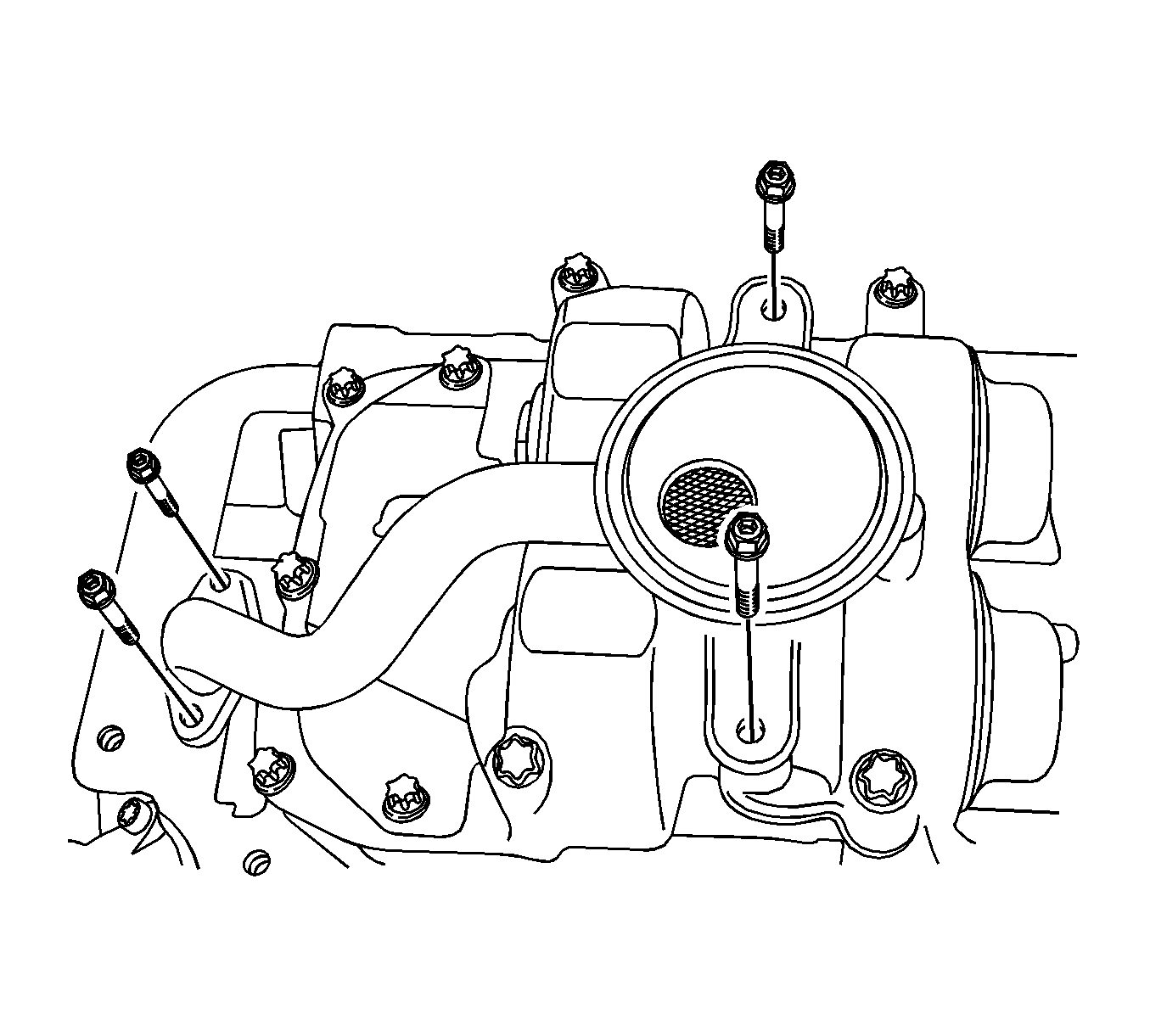
- Remove the cylinder head with the intake manifold and exhaust manifold attached. Refer to
Cylinder Head Replacement.
- Remove the oil pan. Refer to
Oil Pan Replacement.
- Remove the oil suction pipe and the O-ring.

- Remove the oil pan scraper.

- Remove the crankshaft balancer unit assembly. Refer to
Crankshaft Balancer Replacement.
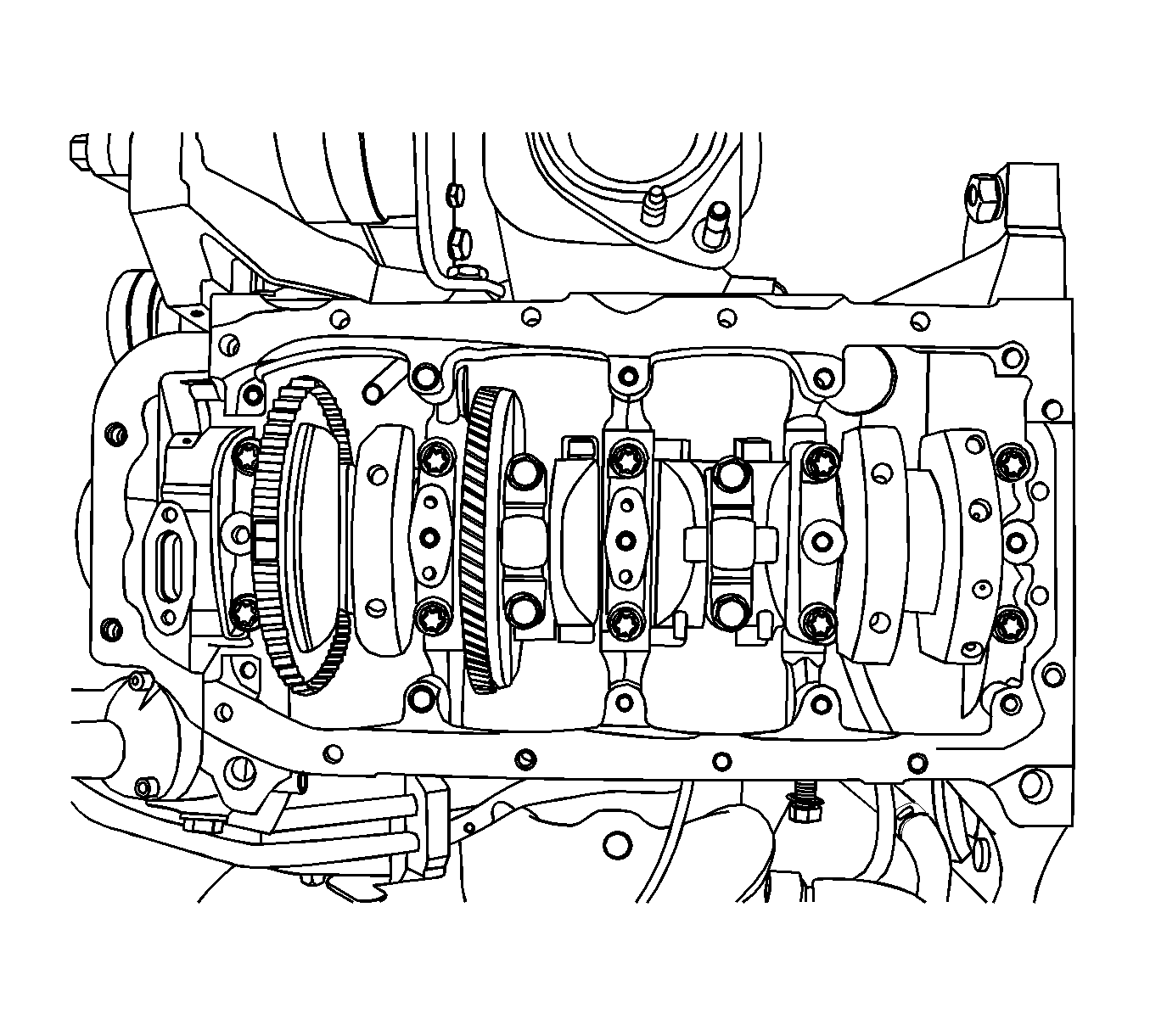
- Position the piston to the bottom of the piston stroke.
- Mark the connecting rod cap for position.
- Remove the connecting rod cap bolts.
- Remove the connecting rod cap and the lower connecting rod bearing.
- Remove the upper connecting rod bearing.

Note: Use care when handling the piston. Worn piston rings are sharp.
- Remove the piston.
- Expand the piston rings by using
J-8037 universal piston ring compressor
.
- Remove the piston rings.
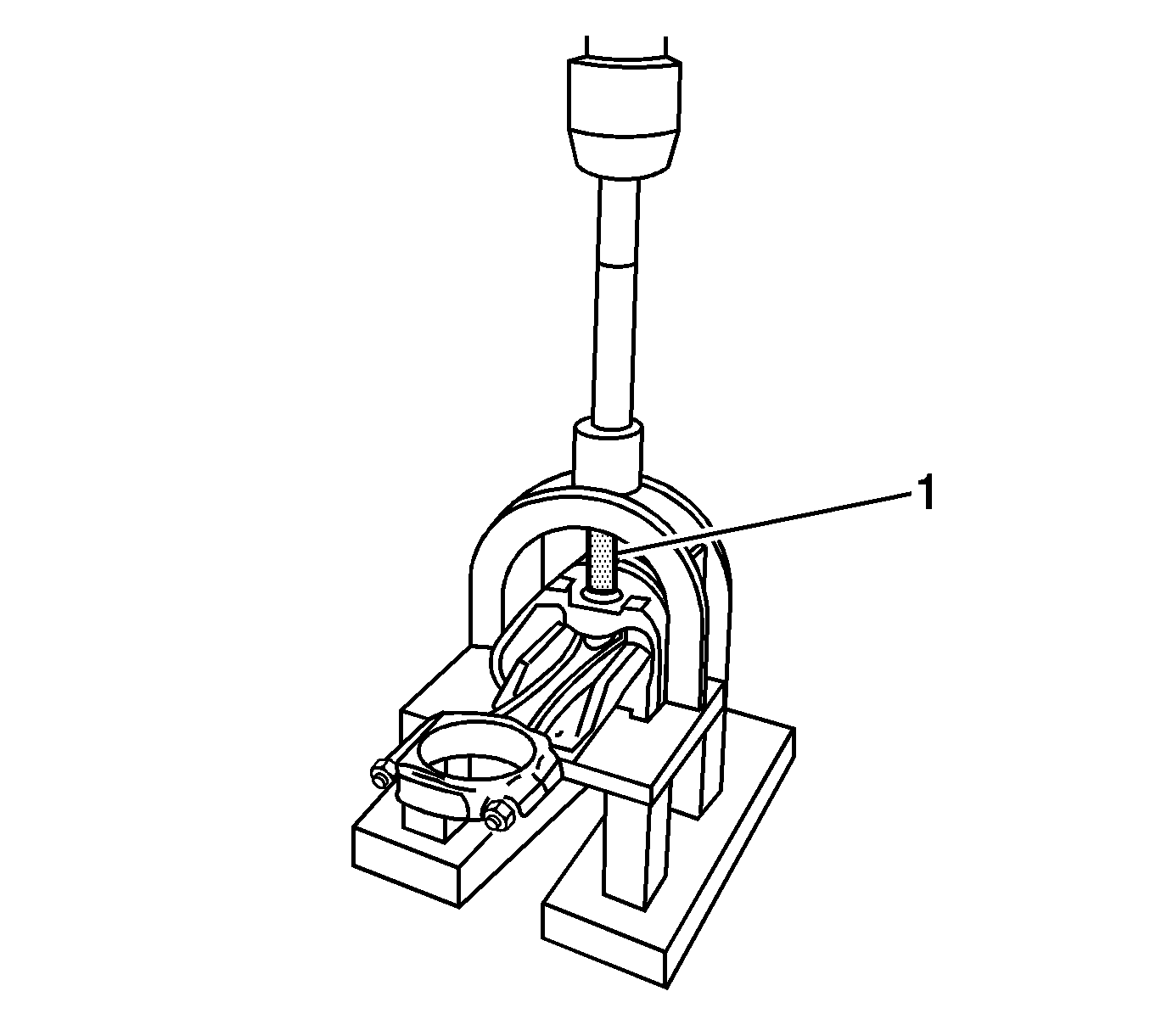
- Remove the piston pin from the piston and connecting rod assembly using the
J-24086-B piston pin service set
(1).
- Separate the piston from the connecting rod.
Inspection Procedure
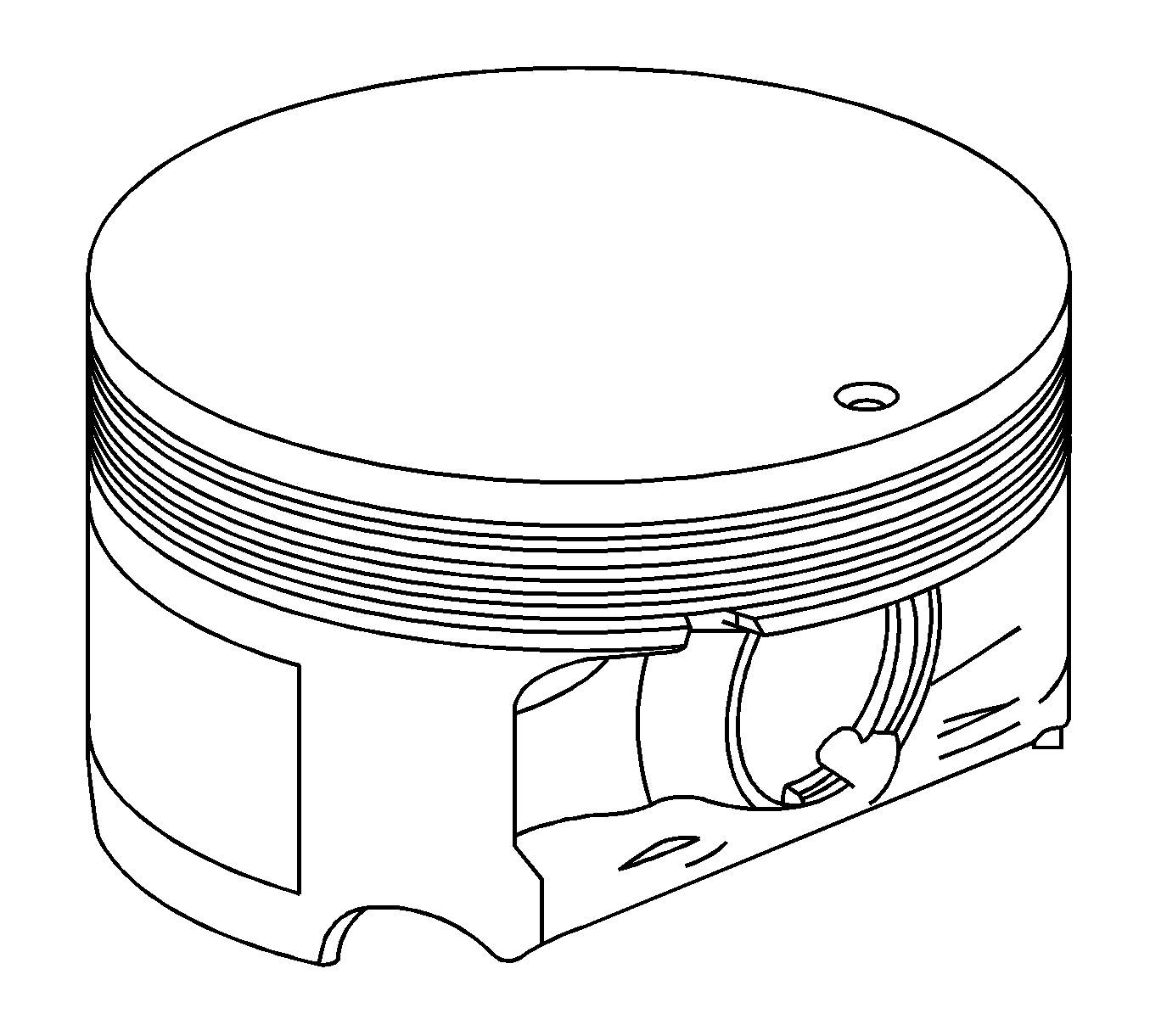
- Inspect the pistons for the following conditions:
| • | Eroded areas at the top of the piston |
| • | Worn piston pin bores or worn piston pins |
| • | Scuffed or damaged skirt coating |
| • | Ring grooves for cracks, nicks or burrs that may cause binding |
| • | Warped or worn ring lands |
- Replace pistons that show any signs of damage or excessive wear.
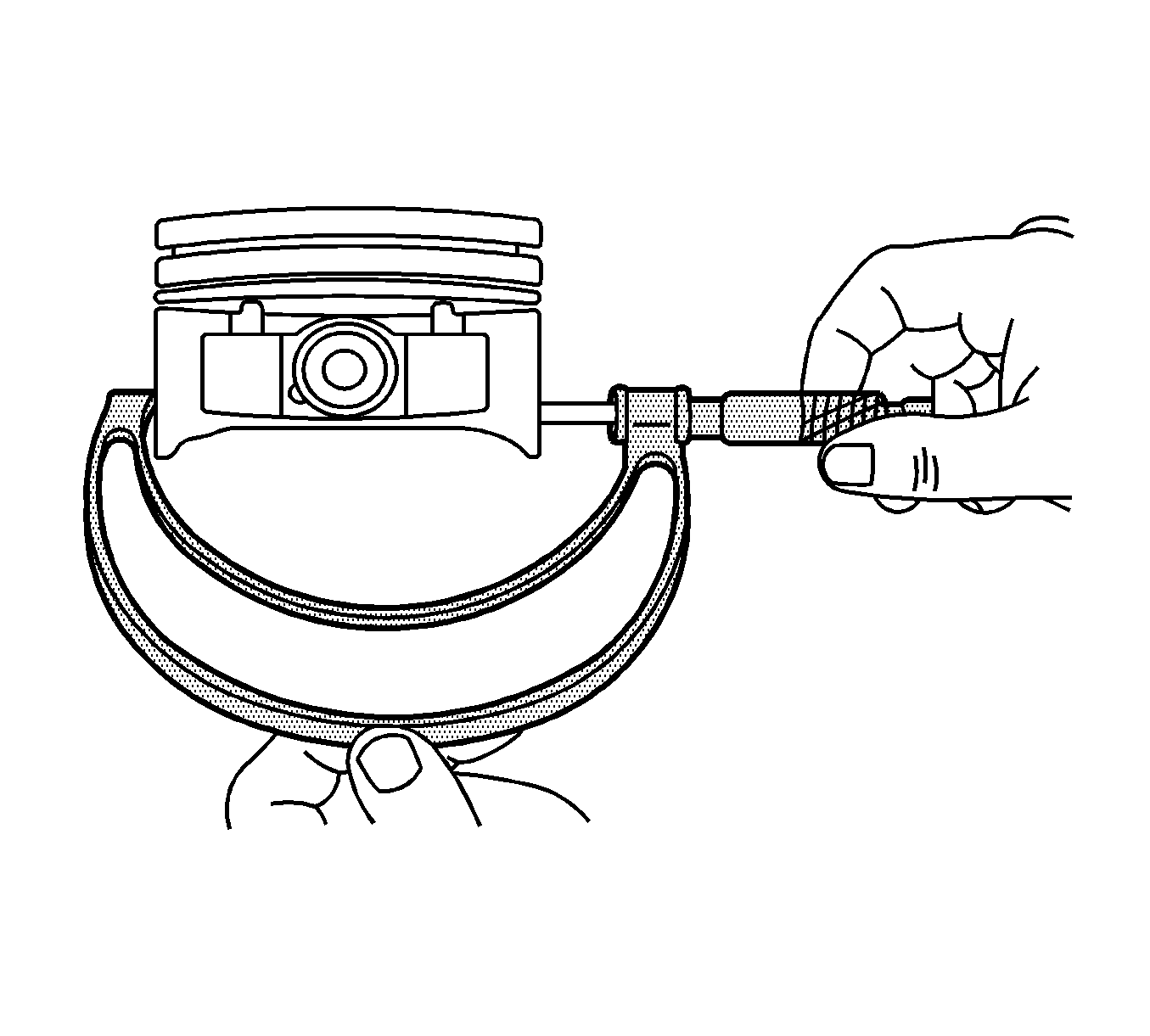
- Measure the piston width using the following procedure:
| • | Using an outside micrometer, measure the width of the piston at the thrust surfaces of the piston, perpendicular to the piston pin centerline. |
| • | Compare the measurement of the piston to its original cylinder by subtracting the piston width from the cylinder diameter. |
| • | If the clearance obtained through measurement is greater than the provided specifications and the cylinder bores are within specification, replace the piston. |

- Measure the piston pin bore to piston pin (2) clearances using the following procedure:
| • | Piston pin bores and pins must be free of varnish or scuffing. |
| • | Use an outside micrometer (1) to measure the piston pin in the piston contact areas. |
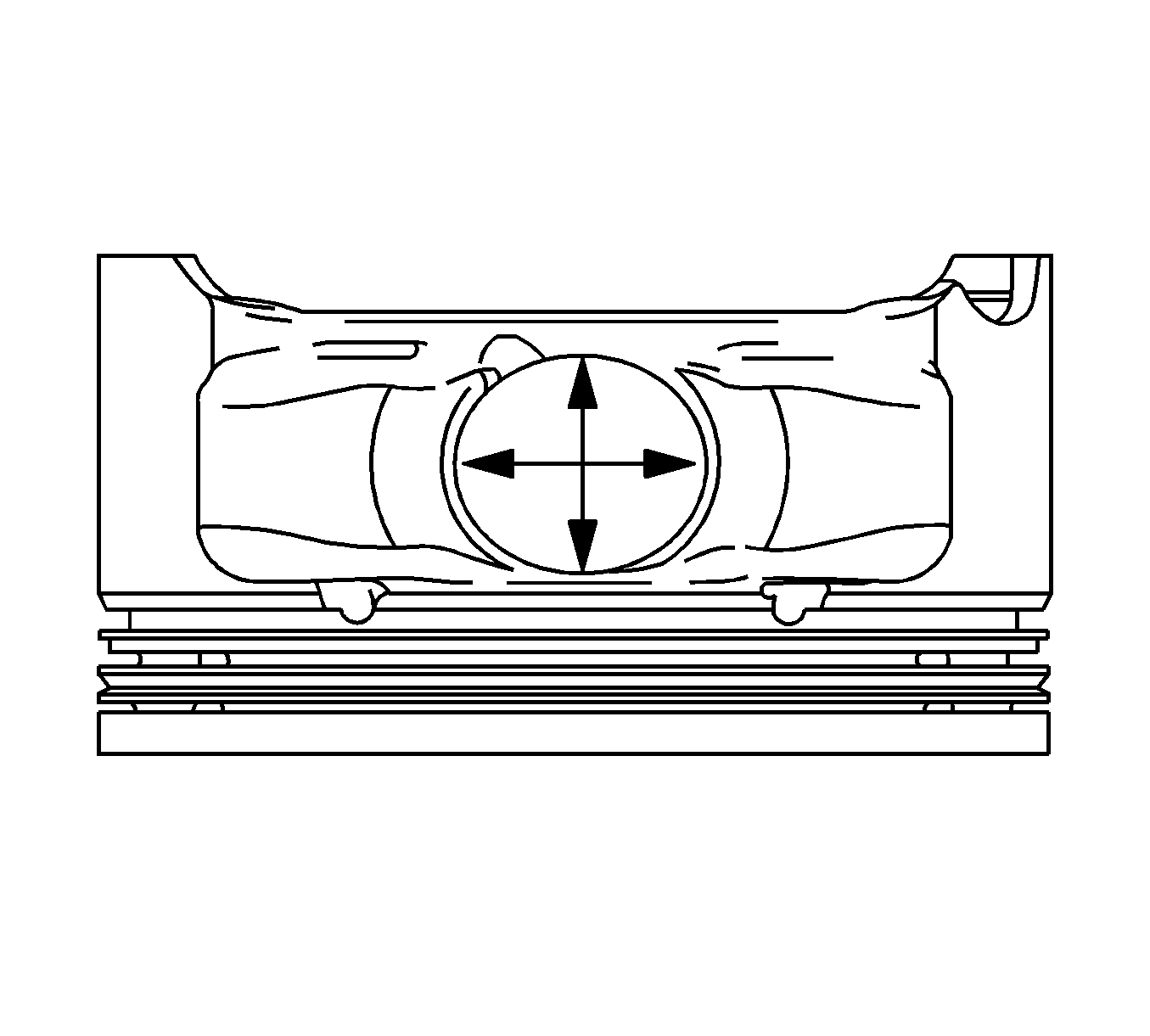
- Using an inside micrometer, measure the piston pin bore. Compare the result with the piston pin diameter and piston pin to piston pin bore clearance. Refer to
Engine Mechanical Specifications.
| • | If the clearance is excessive, determine which piece is out of specification and replace as required. |
| • | Replace the piston if any of its dimensions are out of specification. |
| • | If the new piston does not meet clearance specifications, the cylinder block may need to be oversized to 0.25. There is only one size of oversized pistons and rings available for service. |

- Measure the piston ring end gap using the following procedure.
| • | Piston pin bores and pins must be free of varnish or scuffing. |
| • | Place the piston ring (1) in the area of the bore where the piston ring will travel, approximately 25 mm below the deck surface. Ensure the ring is square with the cylinder bore by positioning the ring with the piston head. |
| • | Measure the end gap of the piston ring with feeler gauges (2). |
| • | If the clearance exceeds the provided specifications, the piston rings must be replaced. |
| • | Repeat the procedure for all piston rings. |
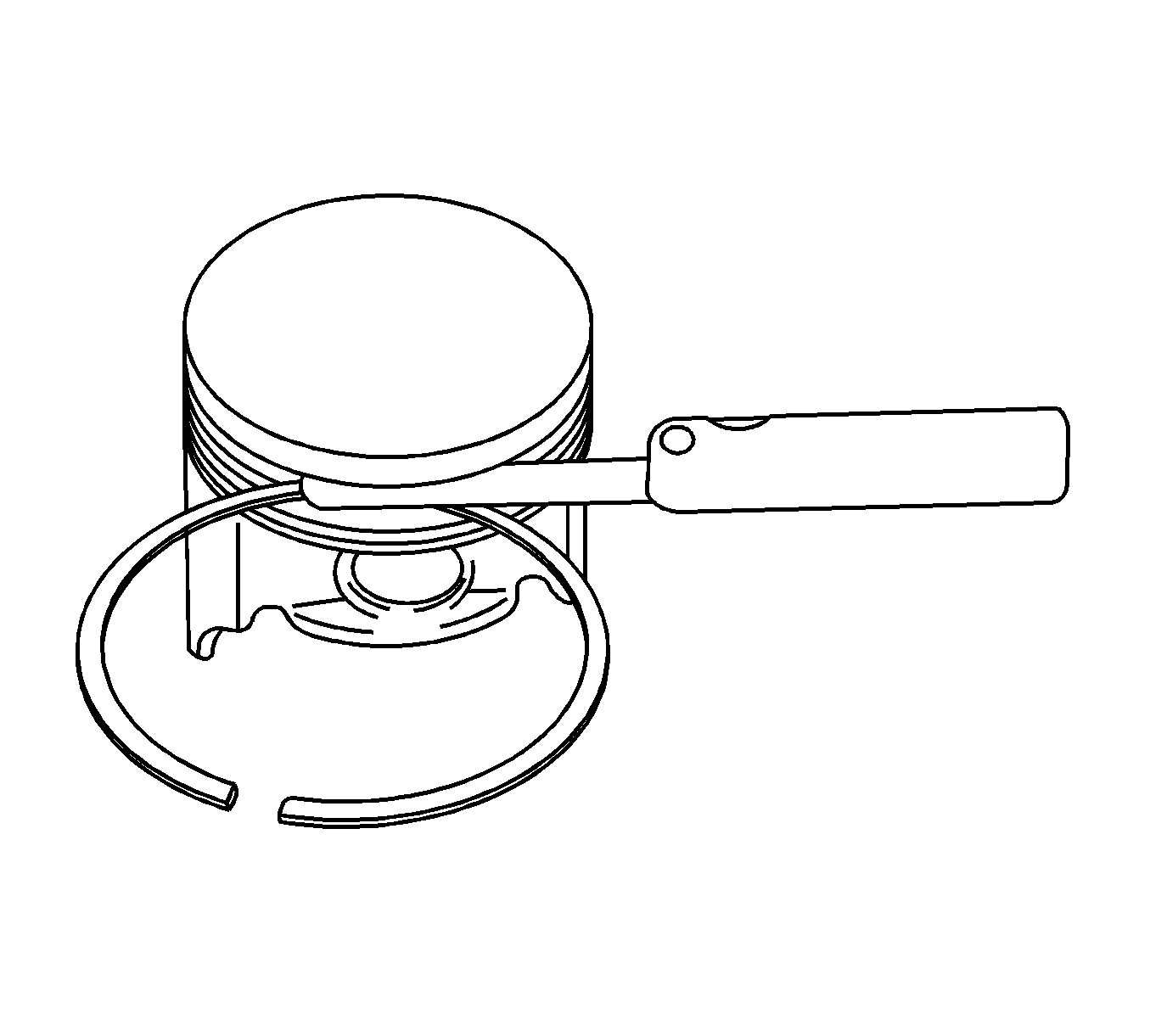
- Measure the piston ring side clearance using the following procedure.
| • | Roll the piston ring (1) entirely around the piston ring groove. If any binding is caused by the ring groove, dress the groove with a fine file. If any binding is caused by a distorted piston ring, replace the ring. |
| • | With the piston ring on the piston, use feeler gauges (2) to check clearance at multiple locations. |
| • | If the clearance is greater than specifications, replace the piston rings. |
| • | If the new ring does not reduce the clearance to the correct specification, install a new piston. |
| • | If the new piston does not meet clearance specifications, the cylinder block may need to be oversized to 0.25 mm. There is only one size of oversized pistons and rings available for service. |
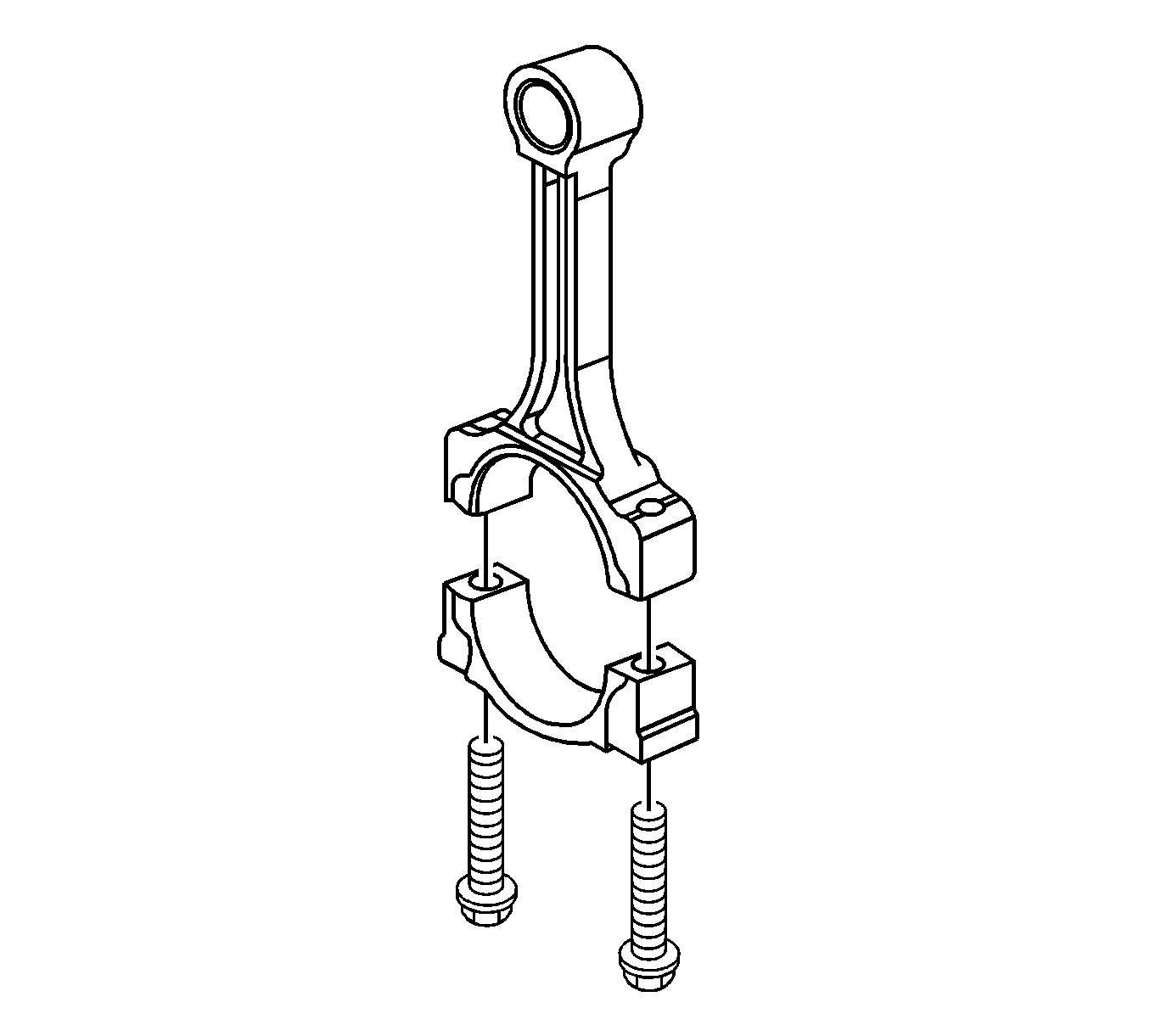
- Inspect the connecting rods for the following conditions.
| • | Inspect the connecting rod beam for twisting or bending. |
| • | Inspect the rod cap for any nicks or damage caused by possible interference. |
| • | Inspect for scratches or abrasion on the rod bearing seating surface. |
| • | If the connecting rod bores contain minor scratches or abrasions, clean the bores in a circular direction with a light emery paper. |
| • | Retain the original bolts for preliminary assembly. They must be replaced for final assembly. |

- Measure the connecting rod piston pin bore to piston pin clearance using the following procedures.
Using an outside micrometer (1), take two measurements of the piston pin (2) in the area of the connecting
rod contact.
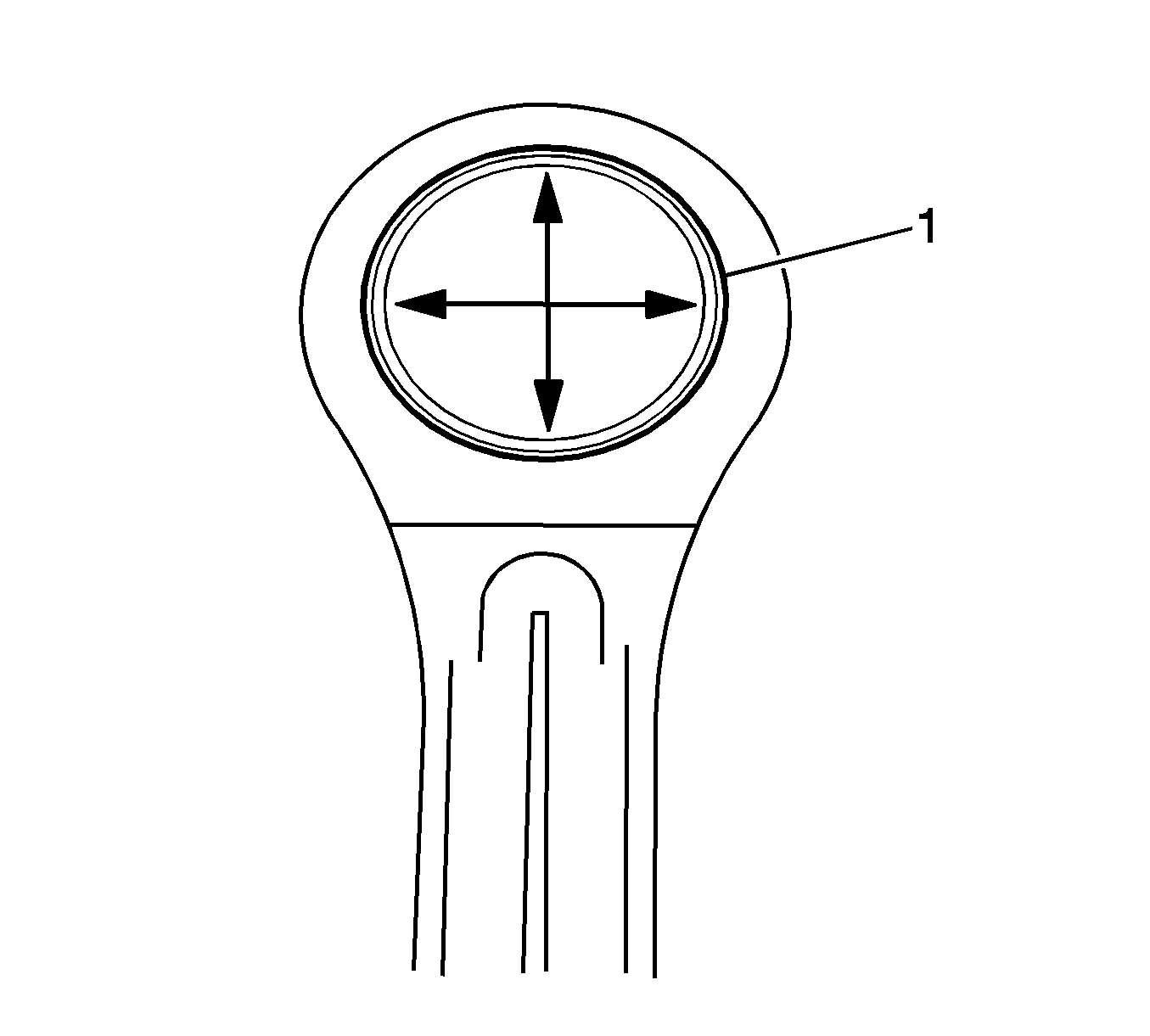
- Using an inside micrometer, measure the connecting rod piston pin bore (1).
| • | Subtract the piston pin diameter from the piston pin bore. |
| • | If the clearance is excessive, replace the piston pin. If a new pin does not resolve the clearance problem, replace the connecting rod. |
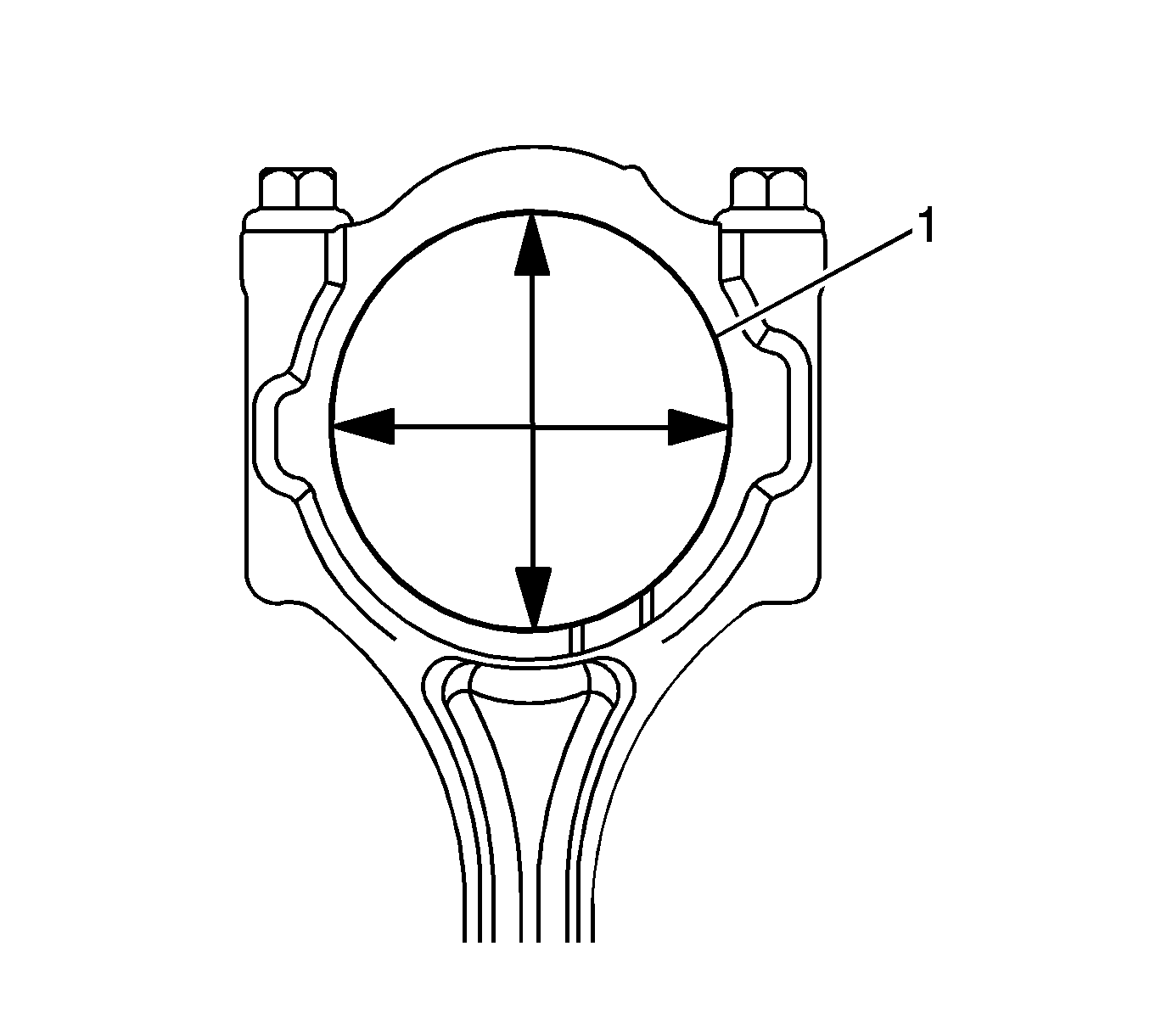
- Measure the connecting rod crankshaft bearing bore (1) using the following procedures.
| • | Using an inside micrometer, measure the connecting rod crankshaft bearing bore. |
| • | Replace the connecting rod if the bore is out of specification. Do not recondition the connecting rod. |
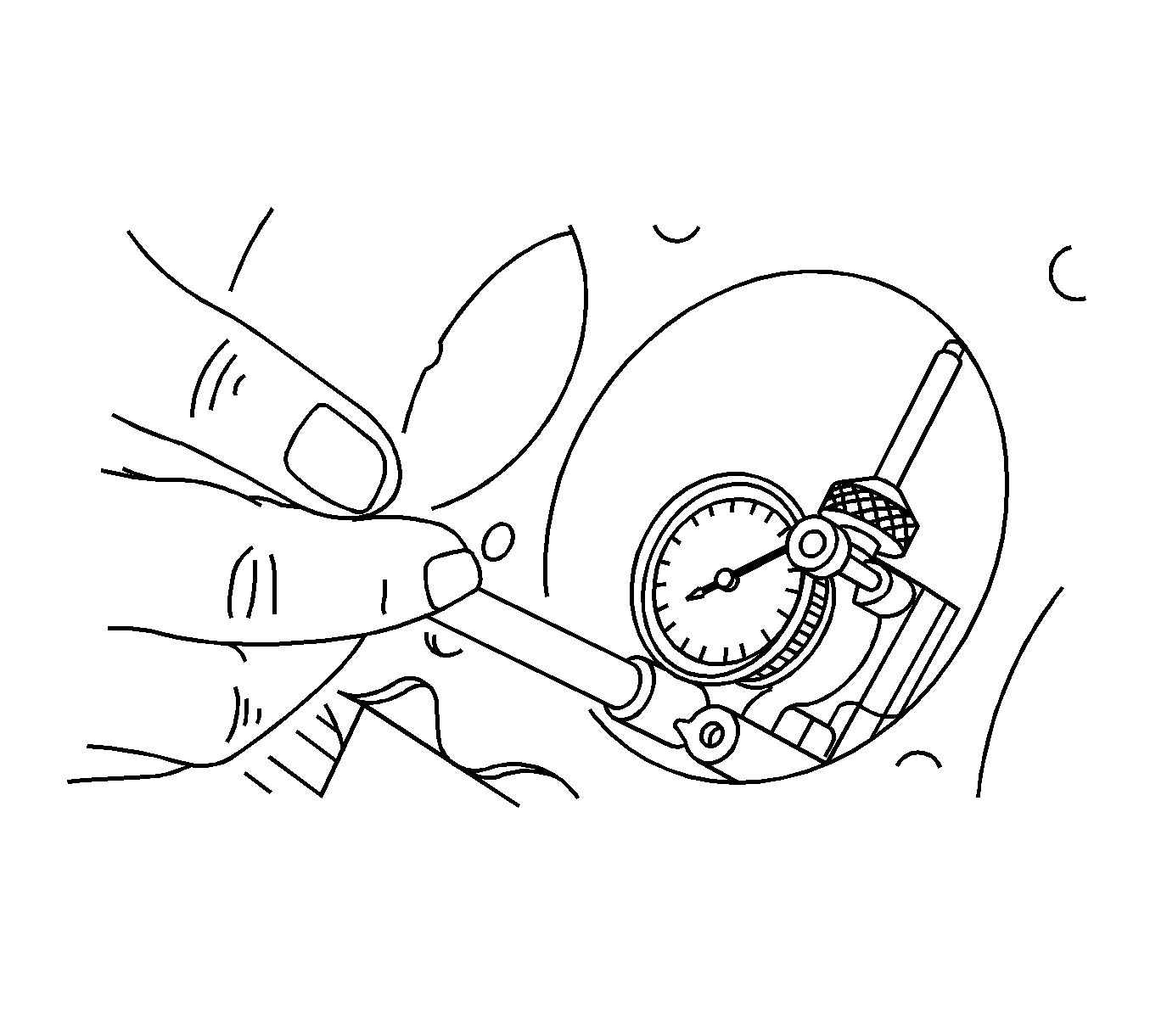
- Inspect the engine block deck surface for flatness using a straight edge and a feeler gage. Refer to
Engine Mechanical Specifications.
- Inspect the bearing bore for concentricity and alignment using
J-8087 cylinder bore check gauge
. Refer to
Engine Mechanical Specifications. If the bearing bore is beyond the specifications,
replace the engine block.
- Inspect the engine block cylinder bore for wear, runout, ridging and taper using a bore gage. Refer to
Engine Mechanical Specifications.
- Inspect the engine block cylinder bore for glazing. Lightly hone the cylinder bore as necessary.
Installation Procedure

Note: For ease of installation of the piston pin, the connecting rod should be heated to 280°C (536°F). Heat the upper connecting rod only. Use commercial thermo color material to determine the correct temperature. When the thermo
color material changes from black to green, the temperature is correct for installation.
- Align the notch on the piston and connecting rod so that the proper sides will be facing the front of the engine.
- Install the piston pin guide through the piston and the connecting rod.
- Coat the piston pin with clean oil.
- Install the piston pin into the opposite side of the piston.
- Install the piston pin into the piston and connecting rod assembly using the
J-24086-B set
.
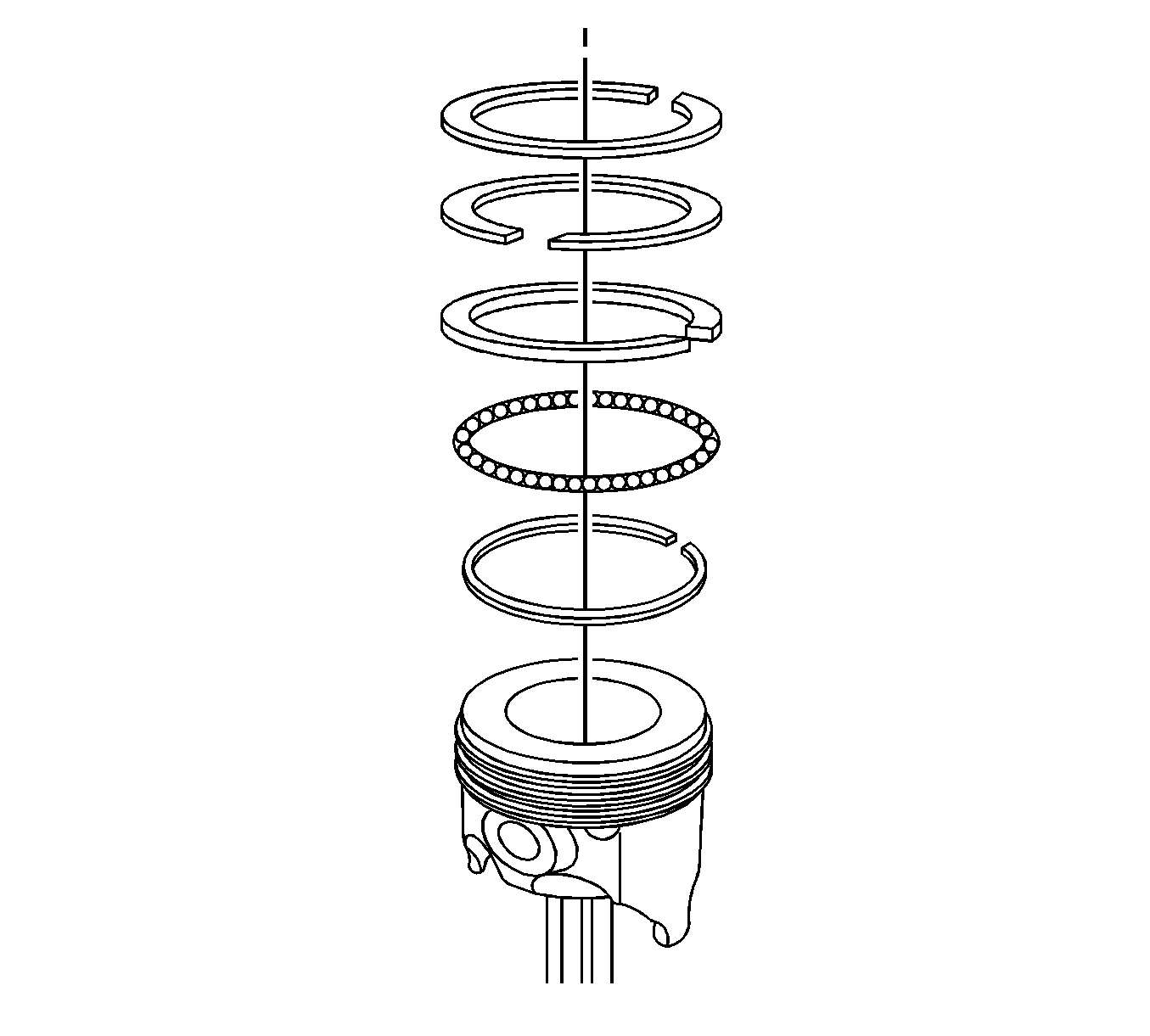
- Select a set of new piston rings.
- Install the piston oil ring, the expander, then the second piston oil ring to the bottom ring groove of the piston.
- Install the second compression ring to the middle ring groove of the piston.
- Install the top compression ring to the top ring groove of the piston.
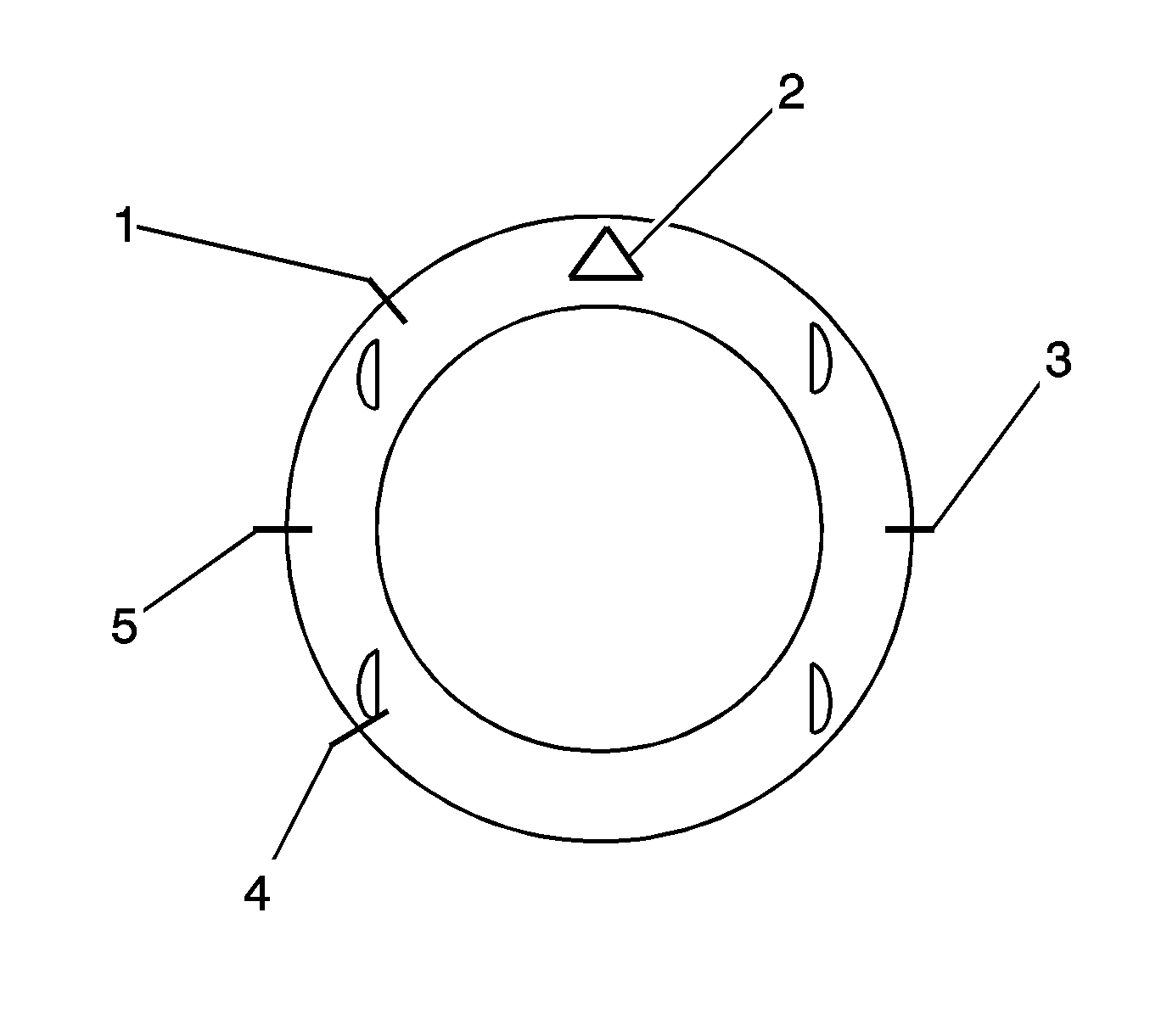
- Use the piston ring expander to install the piston rings. Do not expand the piston rings beyond the expansion necessary for installation.
- Stagger the piston oil rings, the oil ring rail gaps, the second compression ring and the top compression ring in relation to the notch on the top of the piston.
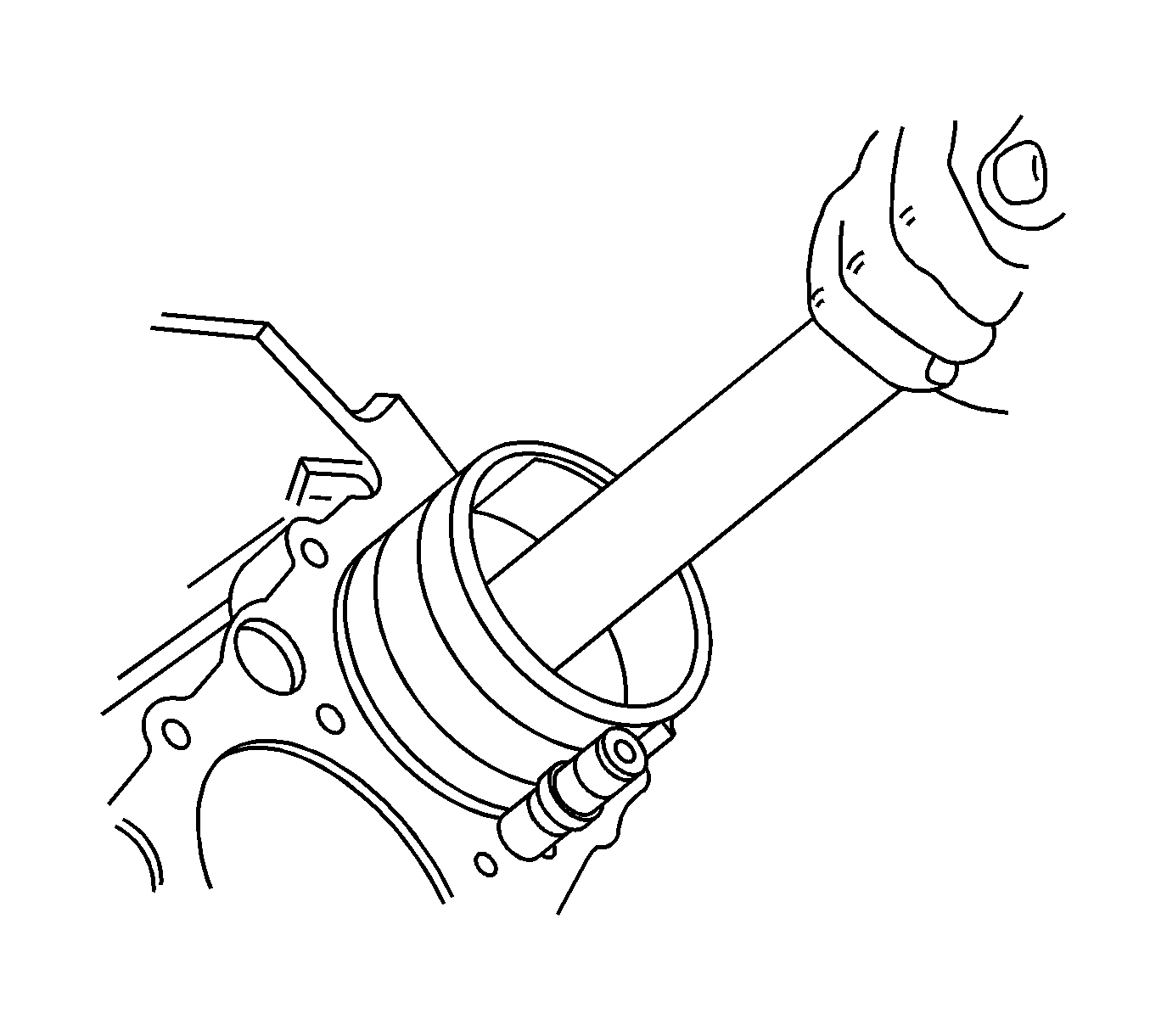
- Lubricate the cylinder wall and the piston rings with clean engine oil.
- Install the piston using
J-8037 compressor
and a wooden handle. Guide the lower connecting rod end to prevent damaging the crankshaft journal.
- Install the connecting rod cap and bearings. Refer to
Crankshaft and Bearing Cleaning and Inspection.
Caution: Refer to Fastener Caution in the Preface section.

- Install the connecting rod cap bolts and tighten to
35 N·m (26 lb ft).
Using
KM-470-B angular torque gauge
, tighten the
bolts
one turn of 45 degrees plus one turn of 15 degrees.

- Install the
KM-470-B gauge
and tighten the crankshaft balancer unit assembly bolts to
20 N·m (15 lb ft)and
turn the bolts another
45 degrees using
KM-470-B gauge
.

- Install the oil pan scraper bolts and tighten to
8 N·m (7 lb in).

- Install the oil suction pipe with the new O-ring and tighten the bolts to
8 N·m (7 lb in).

- Install the oil pan. Refer to
Oil Pan Replacement.
- Install the cylinder head with the intake manifold and exhaust manifold attached. Refer to
Cylinder Head Replacement.


























